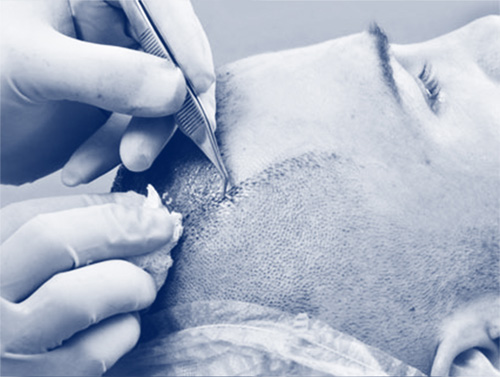Can Hair Transplant Be Applied To The Injured Area?
Baldness problem is a problem that negatively affects the social life of the person and makes the person look older than they are. Baldness may occur due to diseases affecting hormones and genetic predisposition. Sometimes, hair does not grow from the areas with scars and burns, in other words, the hair follicles in the area where burns and wounds are damaged. In such cases, the most permanent and definitive solution is hair transplantation.
In recent years, technology has developed in hair transplantation procedures. With the FUE technique, hair transplantation is completed in one go. The FUE technique produces very successful results in the injured area hair transplantation process.
How Is Hair Transplantation Performed In The Injured Area?
Injuries caused by accidents, fights or traffic accidents leave scars in the head area that sometimes require stitching. In the following years, hair does not grow from the areas with these scars. While hair transplantation is performed on the injured area, the blood flow in the area is primarily controlled. Because if there are very large deformations in the skin, hair may not grow from the area.
The vitality of the skin will enable hair transplantation to the injured area. While hair transplantation is performed on the injured area, healthy hair follicles are mostly preferred from the neck area. Since it is the area where the hair is shed at the latest, hair transplantation taken from this area will last longer.
How Is Hair Transplantation Performed On Burned Areas?
Hairless areas occur in people who have burns in the head area due to any accident. These areas sometimes cover the small part and sometimes the majority of the hair. Burn marks occurring at the hair border point will draw attention to the appearance of baldness. Having hair transplantation in these areas ensures that the problem is completely eliminated.
Before hair transplantation is performed in the burned area, the vitality of the scalp is checked. Because sometimes in severe burns, the transplanted hair may not grow because the skin is damaged. If there is still vitality in the skin, hair transplantation is performed in a healthy way. Hair follicles taken from the back of the ear or from the neck are transferred to the areas with burn marks.
Hair transplantation for burns, wounds and surgical scars is challenging for both the doctor and the patient. The method used to achieve successful results is the FUE method. But first of all, it should be checked whether it is still suitable for planting in those regions.
• Condition of the injured skin,
• The vitality of the cells in the area,
• Depth of skin scar,
• It is decided whether the hair transplantation process will be successful or not, considering the degree of damage.
 What Are The Conditions For Hair Transplantation To The Injured Area?
What Are The Conditions For Hair Transplantation To The Injured Area?
In hair transplantation operations performed on scars after burn scar, scar or brain tumor surgery, the hair follicle taken from the donor area should be efficient. Otherwise, other criteria come into play.
There are some conditions for successful hair transplantation for burns, wounds, surgery and stitches;
• Healthy blood circulation in the scar area
• The tissue in the area is not hardened
• The tissue is not thin
1. Healthy Blood Circulation
Since the hair follicles grow and are nourished through capillaries, the blood circulation in the transplanted area needs to be extremely healthy. The slow blood circulation causes the cells not to get the nutrients and oxygen they need. If the transplanted hair follicles cannot be nourished sufficiently and the area where they are transplanted cannot hold firmly, they risk spilling. This means doing the hair transplant procedure in vain.
For surgery, hair transplantation to burns and scars, blood circulation must be sufficient, otherwise hair follicles cannot be fed and hair transplantation will fail. This situation is checked beforehand by the doctor.
 2. Hardness
2. Hardness
The skin in the areas with scars and burns may become hard and thicker due to the damage it receives. This thickness and hardening can prevent your hair transplantation. While local anesthesia is injected, steroid-based drugs are also injected to create a space between the skin and the skull for a comfortable planting. While these drugs cause swelling between the skin and the skull, they also help the scar area to become smoother.
Therefore, if the area in question has the appropriate thickness and hardness, the process is performed.
3. Thickness
Thin skin in the area to be transplanted is a factor that prevents hair transplantation. While the hair follicles are taken from the skin and transplanted, although micro tools are used, it can damage the thin scalp and prevent transplantation.
As a result, although hair transplantation is an operation performed with micro instruments, it is an operation in which sharp fine-tipped instruments are used.